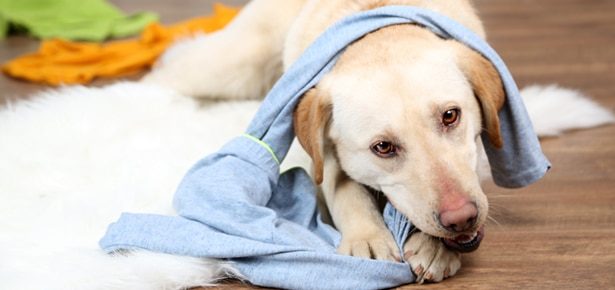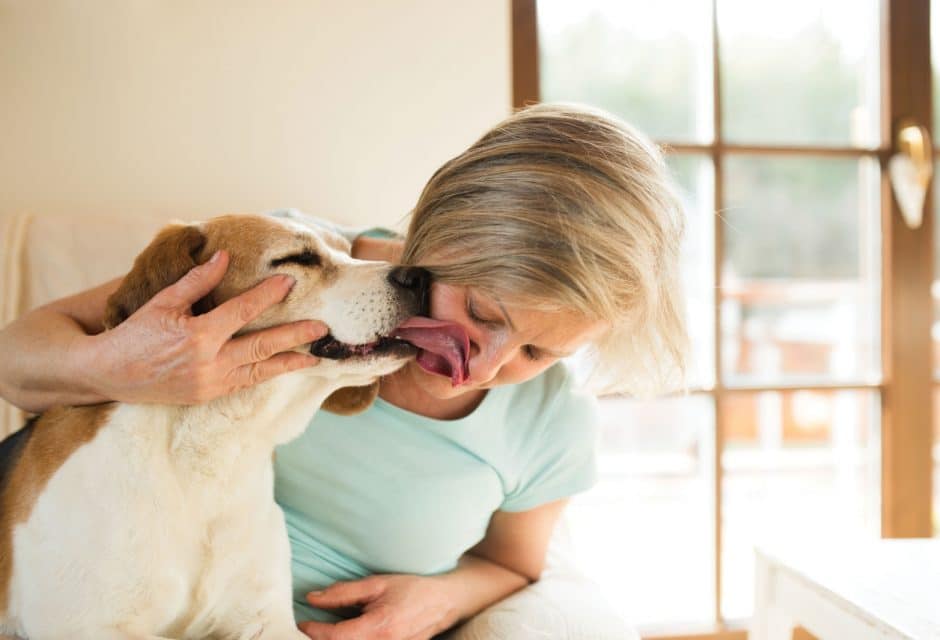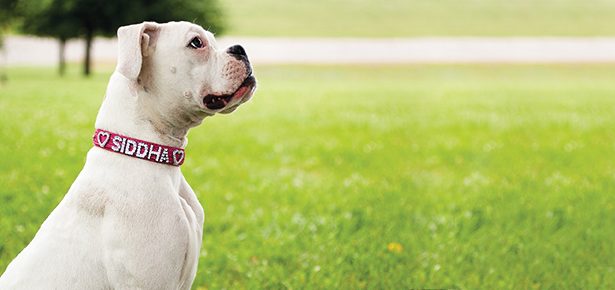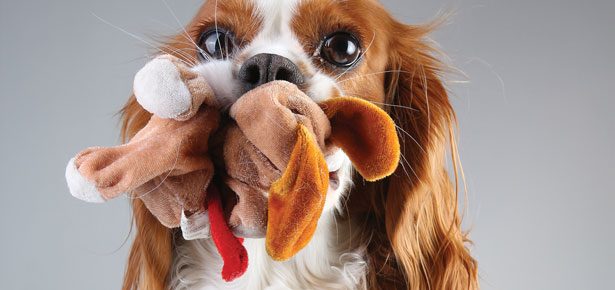
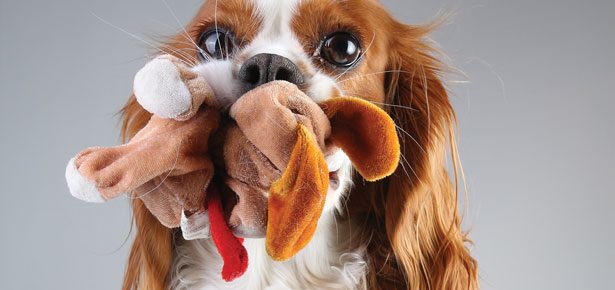
5 Mentally & Physically Stimulating Games to Play with Your Dog
5 Mentally & Physically Stimulating Games
 1. Retrieve Toys by Name
1. Retrieve Toys by Name
Most dogs adore some form of fetch (though you may have to work on the part where they return the tossed object to you). Take your game to the next level by introducing two objects by name (example: “Teddy” and “Blue Whale”). For a mental workout, present both objects at a distance and work with your dog to retrieve the right one (“Go get Blue Whale!”). Need inspiration? A Border Collie named Chaser was trained to comprehend the names of more than 1000 objects. Science Daily reports that researchers at Wofford College “stopped training the dog after three years due to their time constraints, not because the dog could not learn more names.” Bar set. Check out Modern Dog's e-store here for plenty of fun toys your dog will love!
 2. Hide-and-go-seek: version 2.0 or classic
2. Hide-and-go-seek: version 2.0 or classic
In what is being called the “What The Fluff” challenge, people are “disappearing” right before their dogs’ eyes. Videos of this trick recently proliferated across the internet—Google #WhatTheFluff to watch it in action. In a nutshell, people obscure themselves with a blanket while they duck behind a doorframe; when the blanket drops, they’ve disappeared, much to their dogs’ mystification and surprise. This trick is essentially a variant of a hide-and-go-seek game crossed with a bit of sleight-of-hand magic. Give it a try or simply take it back to basics—hide yourself in another room, behind a tree or beneath an object, then call your dog to come find you. Reward your dog with lots of praise, a play session or a tasty treat when she finds you. Hide and seek is a great, simple exercise for bond building and recall, and a wonderful reminder to your dog that good things (Love! Food! Games!) happen when you’re around.
 3. Tug-O-War
3. Tug-O-War
Tug-o-war is beloved by dogs but many people worry it could cause their dogs to become overly excited or aggressive. Behaviourist Dr. Ian Dunbar counters that when played intelligently, tug-o-war is actually a great way to practice keeping control over your dog when she’s excited. But ground rules are necessary. Dr. Dunbar’s guidelines stipulate that you be the one to initiate the game and to only play if you are able to get your dog to release the tug toy and sit at any time. He advises practicing a release and sit every 30 seconds and mixing in short training breaks before resuming the game—a great reward for your dog’s compliance. To get your dog to release the toy and take a break, he coaches to “waggle a treat in front of her nose” and guide your dog into a sit before releasing with praise, the treat, and offering the toy for more tug time. Playing tug like this teaches dogs that it’s not a big deal if someone takes their toy away as they’re likely to get it back—or something better (food!), thus reducing guarding tendencies. What if your dog takes the toy before you tell her to? Dr. Dunbar enforces a 30-second time out before asking for a sit and offering the toy again. Same mistake three times in a row? Game over, no exception!
 4. Nose Work
4. Nose Work
“Nose work is a lot of fun,” says acclaimed veterinary behaviourist Dr. Nicholas Dodman. Nose work activities allow dogs to harness their noses’ amazing ability to detect scent. Dogs possess up to 300 million olfactory receptors in their noses, compared to our approximate six million. And the part of a dog’s brain that is devoted to analyzing smells is proportionally 40 times larger than ours.
In nose work training, dogs learn to identify and locate a particular scent, often hidden in cardboard boxes, either inside or outside. This fun, mentally engaging work makes use of your dog’s most powerful sense—his sense of smell. To get started, find eight fun scent games you can play with your dog at home at moderndogmagazine.com/nosework.
 5. Agility Course Training
5. Agility Course Training
Agility courses are simply terrific for dogs. In agility, dogs have to think and remember what comes next in the course (mental engagement), get to run off steam (physical exercise), and work with their favourite person (quality bonding time)—it’s a perfect activity. Furthermore, agility trains your dog to listen while providing them with a terrific amount of exercise. Join an agility group and make new friends, human and canine alike! Or, if joining a group is keeping you from getting started, you can create a DIY agility course in your backyard—get the how-to at moderndogmagazine.com/diyagility.
Join the newsletter and never miss out on dog content again!
"*" indicates required fields
By clicking the arrow, you agree to our web Terms of Use and Privacy & Cookie Policy. Easy unsubscribe links are provided in every email.
 2. Hide-and-go-seek: version 2.0 or classic
2. Hide-and-go-seek: version 2.0 or classic 3. Tug-O-War
3. Tug-O-War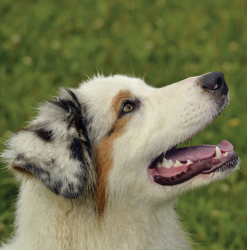 4. Nose Work
4. Nose Work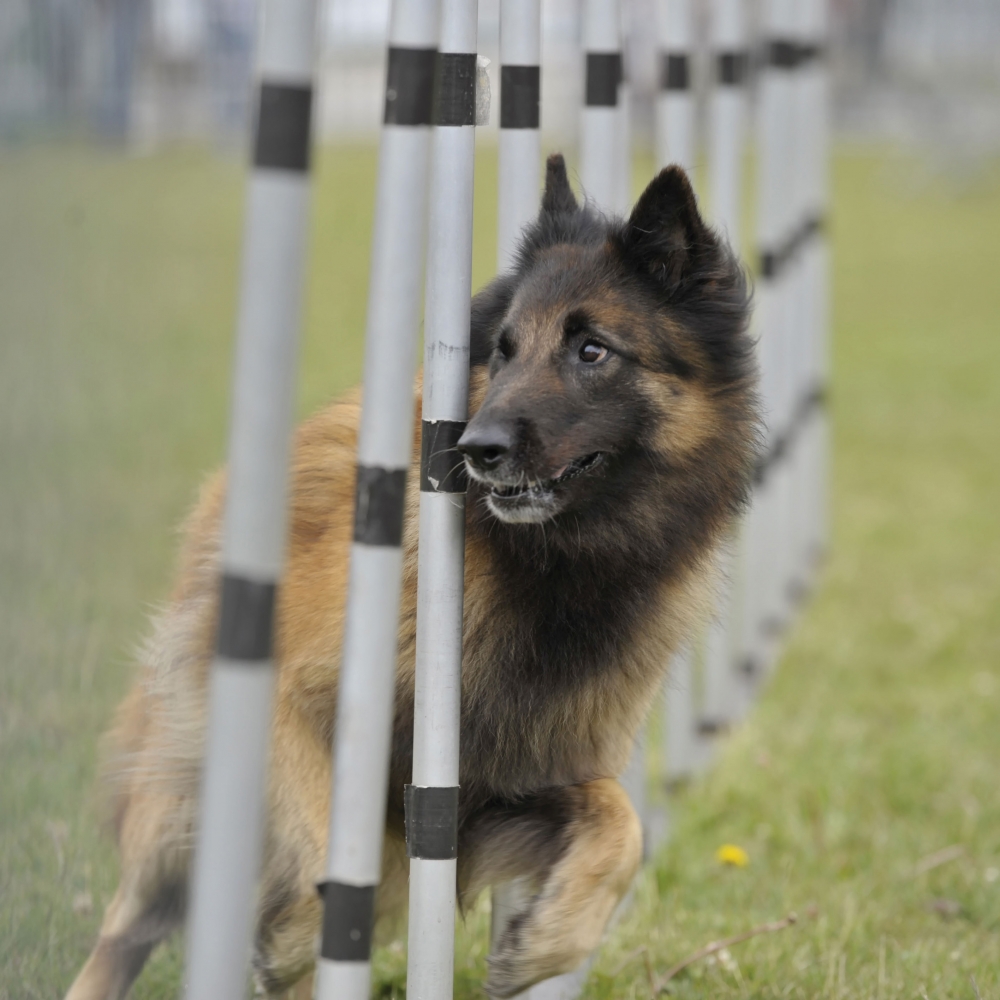 5. Agility Course Training
5. Agility Course Training